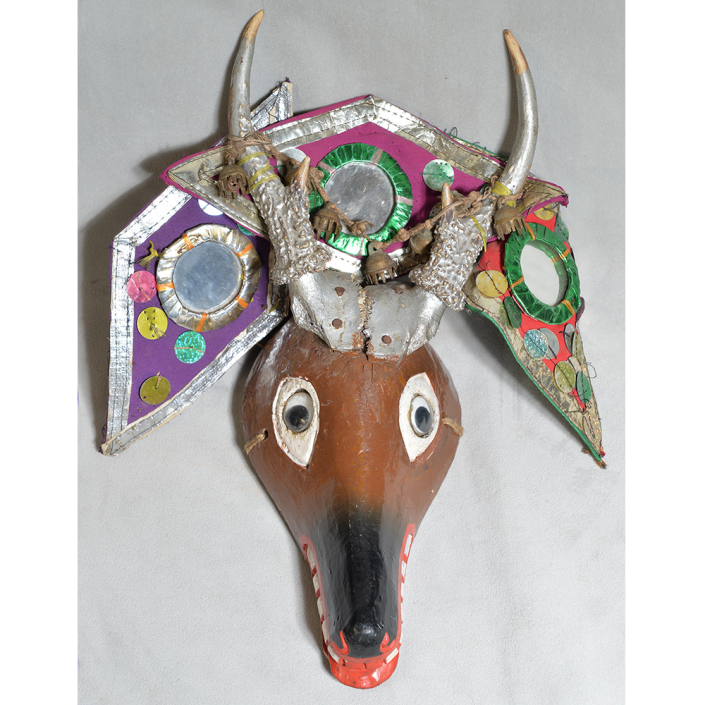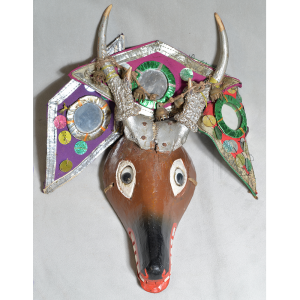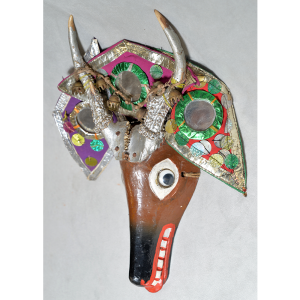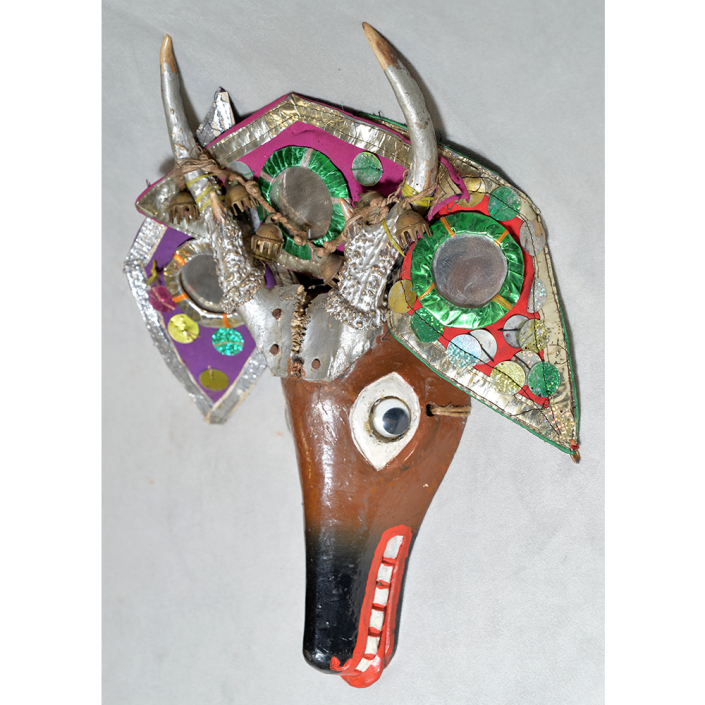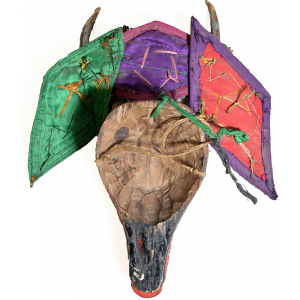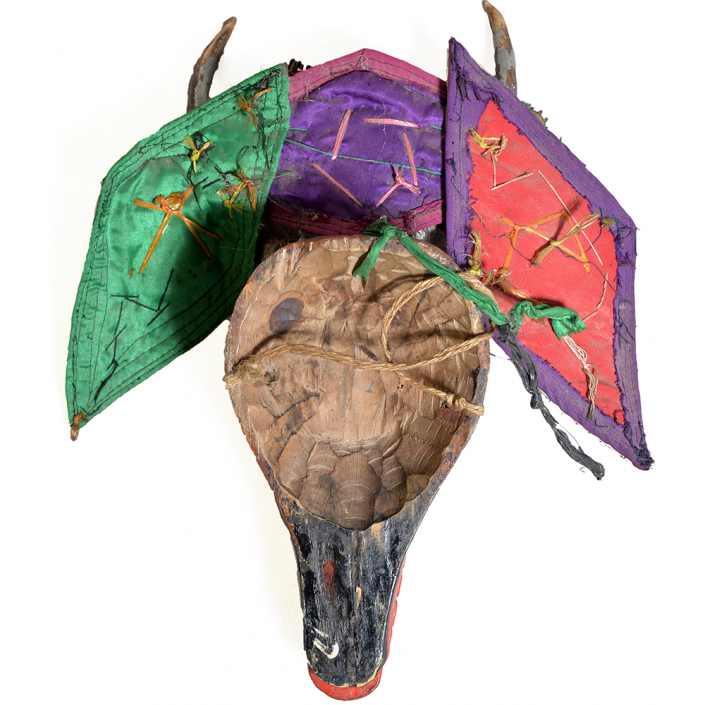TITLE: Venado Mask
TYPE: face mask
GENERAL REGION: Latin America
COUNTRY: Guatemala
SUBREGION: Panajachel
ETHNICITY: Mayan (Kaqchikel)
DESCRIPTION: Venado (Deer) Mask
CATALOG ID: LAGT034
MAKER: Unknown
CEREMONY: Baile del Venado (Dance of the Deer)
AGE: 1960s
MAIN MATERIAL: wood
OTHER MATERIALS: white-tailed deer antlers; paint; plastic eyes; dyed cotton cloth; mirrors; sequins; brass bells; polyester fabric
The Baile del Venado, also called the Danza del Venado, is an annual ceremony in several cities of central and southern Guatemala, usually during a holiday in honor of the town’s patron saint. Frequently it takes place over a week or more. The dance dates back to the pre-colonization and undoubtedly originates in Mayan rituals of respect for nature and prayer for a good hunt. In its modern incarnation, the Baile del Venado typically involves several masked characters, including a steward or mayordomo (in Kaqchikel, cachucha), Margarita (his wife), and el Moro (the Moor, who is actually Caucasian in this region and has a quetzal bird on his forehead). With them are several animals, depending on the village, and they may include a mono (monkey), mico (small monkey), león (lion), tigre (tiger), tigrillo (little tiger), jaguar, perro (dog), a guacamaya roja (Scarlet Macaw), and sometimes others. In some places, the mono and mico are the same character. The number of each animal character depends on the size of the village and the number of participants.
While originally this dance simulated a hunt, in modern times the animals dance and the mayordomo and Margarita feed them. The moro enters last, with a quetzal on his head as punishment from the gods for having worn sacred quetzal feathers. The moro does not hunt the animals, but rather acts as their guardian and caretaker.
This mask was made in the 1960s and danced extensively in Panajachel by Evaristo Rosales. It may come from a moreria (mask and costume maker and renter) in Solalá or Chichicastenango.
For more on Guatemalan masks, see Jim Pieper, Guatemala’s Masks and Drama (University of New Mexico Press, 2006).
